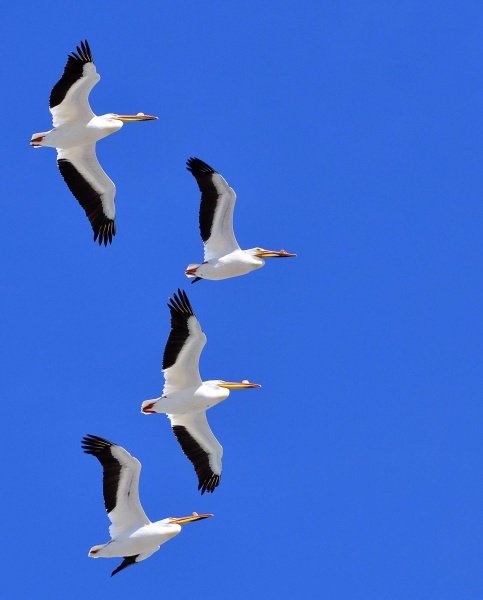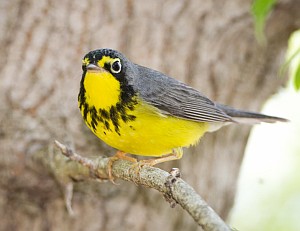
Today is International Migratory Bird Day in the U.S. and Canada.
Though birds migrate during many months of the year their biggest push in North America is in early May. That’s why we celebrate their arrival and promote their conservation on this second Saturday.
In May migrating birds pass overhead at night and stop to eat in unlikely places where they don’t intend to stay. Yesterday I saw a spotted sandpiper (pictured above) at Schenley Park’s Panther Hollow Lake. Shorebirds and wading birds are rare visitors to the lake because the concrete edge provides no food. The sandpiper paused for a snack at the cat-tails and creek outflow … and then he was on his way to breed at a stream bank, lake or river.
Lake Erie’s southern shore is a great place to find migratory birds this month. Last week I went birding from Erie, Pennsylvania to Maumee Bay, Ohio. Here are two of my favorite species seen at Magee Marsh, Ohio — one very large species and one small.


American white pelicans and Canada warblers don’t breed at Magee Marsh but they’re there this month.
Don’t miss the migration on International Migratory Bird Day. Get outdoors in May!
(photo credits: Spotted sandpiper by Bobby Greene,
American white pelicans by US Fish & Wildlife via Wikimedia Commons.
Canada warbler by Cris Hamilton)
I saw a spotted sandpiper at Panther Hollow Lake around this time last year, too. An unexpected sighting for sure! 🙂
Hey Kate,
I saw a pair Thursday evening at Panther Hollow Lake the same place you did. I knew they were sandpipers, but not the species.